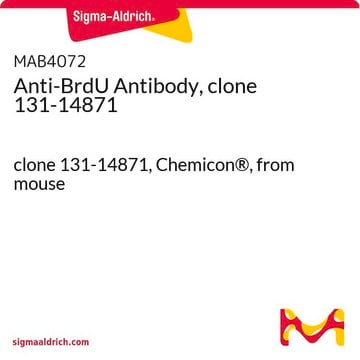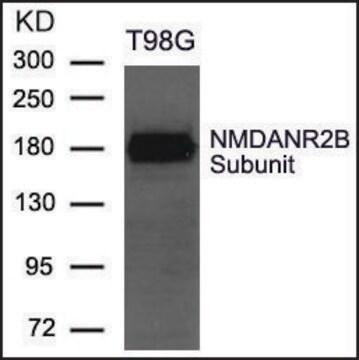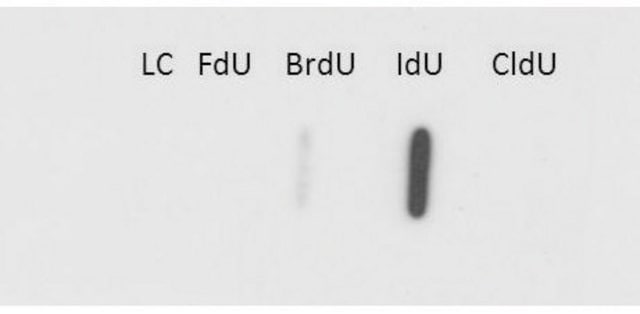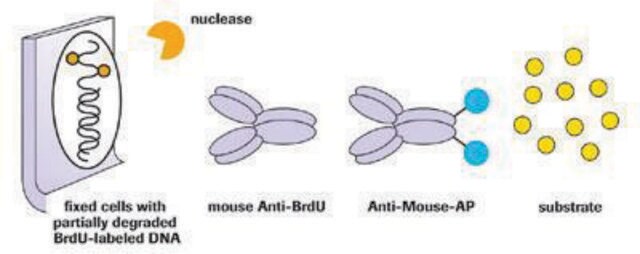11170376001
Roche
Anti-Bromodeoxyuridine
from mouse IgG1 (clone: BMC9318)
Synonym(s):
anti-BrdU, antibody
About This Item
Recommended Products
biological source
mouse
Quality Level
conjugate
unconjugated
antibody form
purified immunoglobulin
antibody product type
primary antibodies
clone
BMC9318, monoclonal
Assay
90% (HPLC and SDS-PAGE)
form
solution
packaging
pkg of 50 μg (500 μl)
manufacturer/tradename
Roche
isotype
IgG1
storage temp.
−20°C
Related Categories
General description
Specificity
Immunogen
Application
- Flow cytometry
- Immunohistocytochemistry
- Cryosections
- Paraffin sections
Quality
Specifications
No. of tests: 250 (Flow cytometry)
Physical form
Preparation Note
Working concentration of conjugate depends on application and substrate. Dilutions should be made in PBS (pH 7.4) containing 0.1% BSA to maintain stability of the antibody.
Analysis Note
No cross reaction to any endogenous thymidine or uridine.
Cross reactivity with 5-Br-UTP has not been tested but it is suggested that there is a good chance for reaction, because the only difference is an absent hydroxyl group on the ribose distal to the bromine substitution.
Other Notes
Not finding the right product?
Try our Product Selector Tool.
Storage Class Code
12 - Non Combustible Liquids
WGK
nwg
Flash Point(F)
No data available
Flash Point(C)
No data available
Certificates of Analysis (COA)
Search for Certificates of Analysis (COA) by entering the products Lot/Batch Number. Lot and Batch Numbers can be found on a product’s label following the words ‘Lot’ or ‘Batch’.
Already Own This Product?
Find documentation for the products that you have recently purchased in the Document Library.
Customers Also Viewed
Our team of scientists has experience in all areas of research including Life Science, Material Science, Chemical Synthesis, Chromatography, Analytical and many others.
Contact Technical Service










